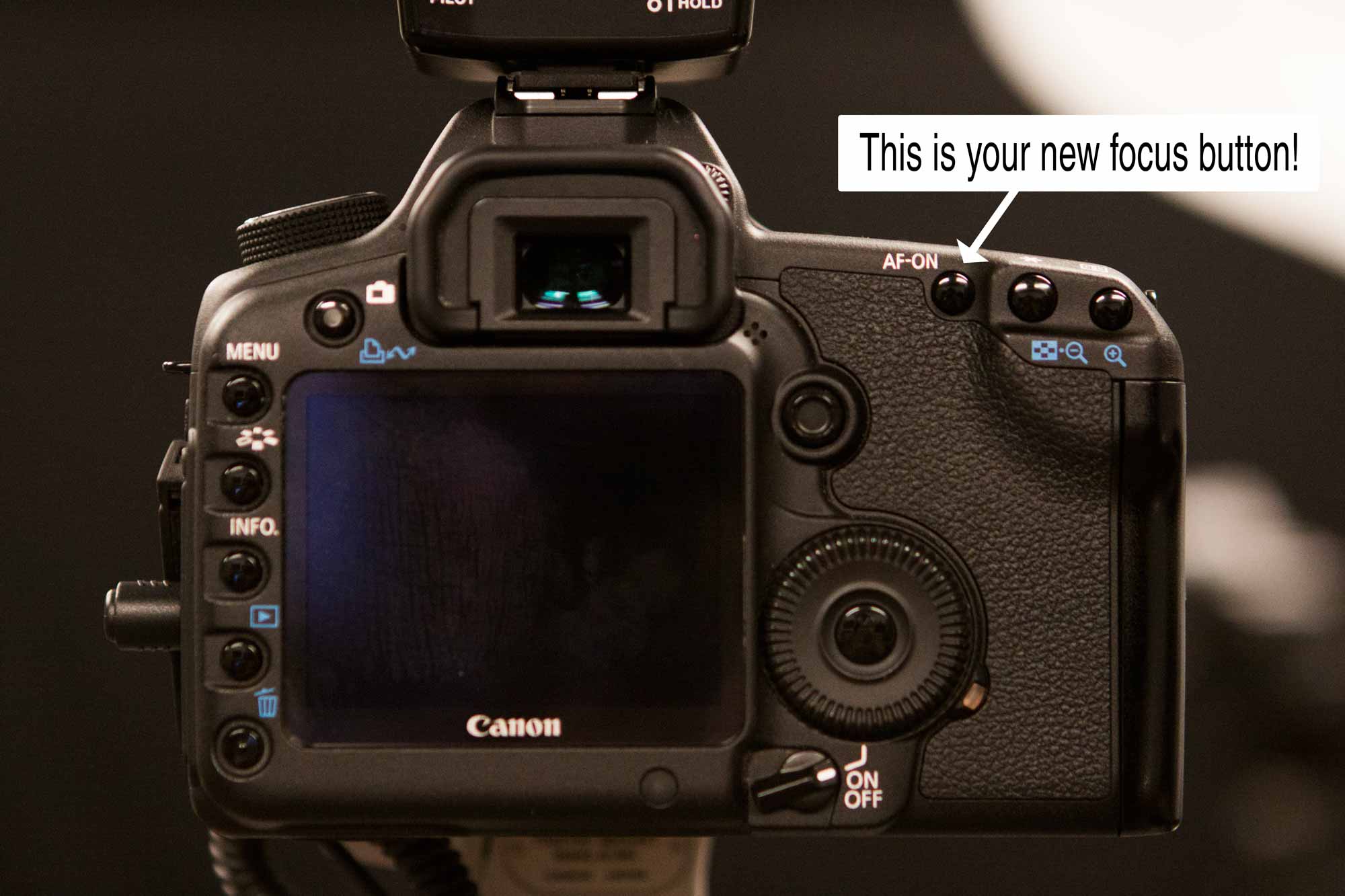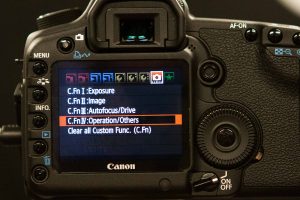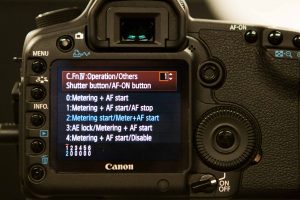Back button focus is one of those photography terms that I had heard thrown around from time to time, but I never took the proper time to explore what it was all about. I finally sat down and did a bit of research on the topic and discovered it was something pretty awesome, so if this is something you are also curious about, read on!
Back button focus simply means you will be using a button on the back of your camera to focus instead of your shutter release. Why on earth would you ever do that? The number one reason (in my opinion) that you’d do this is when you are using servo focus mode. If you are unfamiliar with servo focus, this is a focus mode in which the camera is constantly tracking your subject as you hold the shutter button halfway down. This is a great mode to use when shooting photos of sports, your dog at the park, your kids running around, etc. Servo mode is a great feature, but can also be extremely frustrating if you are trying to focus while also trying to compose your shot. Here’s an example of what I mean: you are in servo mode, shooting your dog playing at the park. You are following your dog’s movements, with the lens constantly tracking and focusing along the way. You’d like to get a nicely composed shot of your dog, using the rule of thirds and all the other composition tricks you’ve been practicing. So as you quickly place your subject (your dog) out of dead center in the frame, with your finger still held halfway down, the camera starts trying to focus on the background instead. Because you are in servo focus mode, the camera is doing exactly what you told it to do, and the shot is ruined. At this point you might be thinking, “why would anyone use this stupid servo mode, it sucks!” This is where back button focus can really help.
With back button focus enabled, you’ll no longer be using the shutter button for focusing. Instead, you’ll be using a button on the back of the camera that’s labeled “AF-ON”. You’ll notice that this button is easily accessible by your thumb on every SLR that has this feature, and that’s on purpose. Using the above example of you trying to get a great shot of your dog playing in the park, you’d have your thumb holding the AF-ON button as you track your dog, then when you are ready to compose the shot, you’d simply take your thumb off the AF-ON button, hit the shutter release, and get a nice shot. The camera stops focusing when you let go of the AF-ON button and the shutter button is doing exactly what its name implies: releasing the shutter.
AF-ON isn’t just for servo focus mode, however. It still works great using the default “one shot” focus mode. The same technique would apply here: Use the AF-ON button to focus, release when you get the focus you want, recompose and shoot. I’ve used this technique when shooting events where there’s an important speaker talking at a podium, or someone giving a speech in which they roam the room using a hand-held microphone. It works great, and once you get used to it you might never go back!
So how do you enable this whole “back button focus” deal? It’s actually pretty easy, but you’ll need to dig into your camera’s menu settings. I’ve enabled it on a Canon 5D Mark II as well as a Canon 50D. As soon as I learn how to enable it on a Nikon, I’ll update this post.
Here’s how to enable back button focus on a Canon 5D Mark II and a Canon 50D (the settings are identical):
- Press the “Menu” button.
- Scroll over to the orange camera icon.
- Use the scroll wheel and choose C.FnIV:Operation/Others. Hit the “set” button (center button) to open the options.
- The first option you’ll see is “Shutter button/AF-ON”. Hit SET on your scroll wheel to go into the menu options.
- The 3rd option down is what you want. It’s labeled “2:Metering start/Meter+AF start”.
Once that’s set, you’ll use the “AF-ON” button to focus and the shutter button will only be used to release the shutter. If you want to change the settings back, go back into the menu and choose the first option (0:Metering + AF start).
Here are some images showing the settings on a 5D Mark II.











